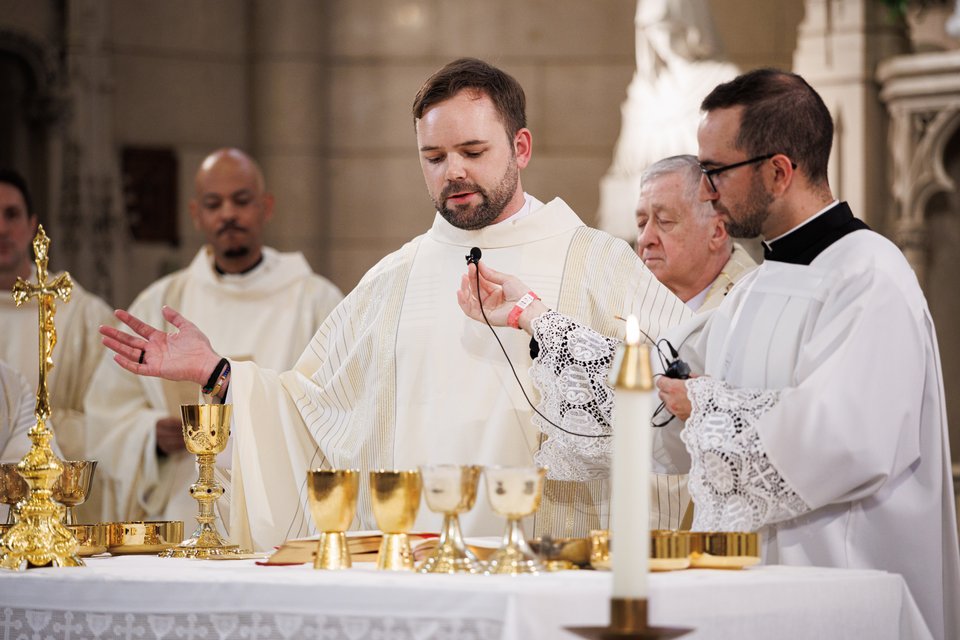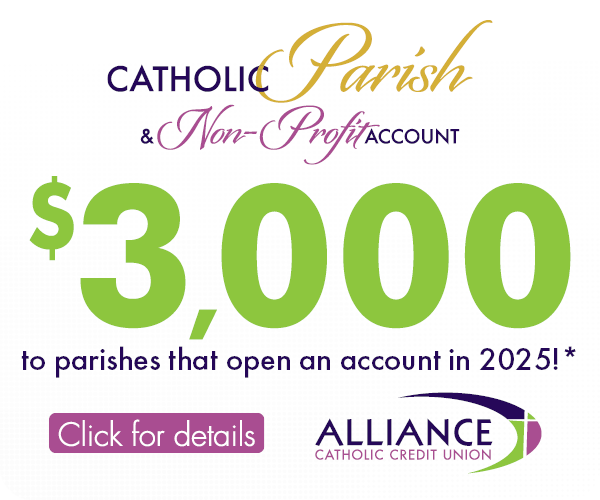Arising from the Church’s responsibility to teach the faith, catechetical schools were flourishing as early as the second century A.D. And there is mention of some of these schools also instructing children in other branches of knowledge, as well.
Bishops began to conduct schools primarily for the education of clergy, but sometimes taking on lay students, too.
As monasteries developed, the education of children entrusted to their care became a common function, and after the fall of the Roman Empire, monasteries appear to have borne much of the burden of providing such education as was available.
In monastic schools, the curriculum was that of the trivium — grammar, rhetoric and dialectic — followed by the quadrivium — arithmetic, geometry, astronomy and music theory. This was to remain the model for schools throughout the Middle Ages.
But there were also schools attached to cathedrals, chantries, guilds and hospitals, as well as some non-cathedral churches.
|
That at least some of these schools were not just for the children of the nobility or wealthy merchants is shown by numerous references to making provision for “poor scholars” in various documents from the time.
Besides becoming an aspect of the work of some of the earliest monastic orders, such as the Benedictines, education was to become part of the charism — if not the central charism — of many other religious communities founded through the centuries.
One of these was the Brothers of the Common Life, founded in the 1300s. Among its members was Thomas a Kempis, whose “The Imitation of Christ” remains a devotional classic to this day. The order, however, died out in the mid-1600s.
Of course, the Dominicans had been around since the 1200s, and the 1500s saw the founding of the Society of Jesus. Jesuit-sponsored schools in the Archdiocese of Detroit include University of Detroit Jesuit High School, Loyola High School and the University of Detroit Mercy (which they co-sponsor with the Sisters of Mercy).
Among the most famous of the religious communities founded for the principal purpose of teaching is the Brothers of the Christian Schools, founded by St. Jean-Baptiste de la Salle in the 1600s. Generally known as the Christian Brothers, they sponsor De La Salle Collegiate in Warren.
Early 19th-century Ireland was where two more religious communities were founded that have a presence in the Archdiocese of Detroit today — the Edmund Rice Christian Brothers, who sponsor Brother Rice High School, and the Sisters of Mercy, who sponsor Mercy High School (in addition to their co-sponsorship of the University of Detroit Mercy).
Also founded in the early 19th century, but in France, were the Society of Mary and the Congregation of St. Basil. The Marists sponsor Notre Dame Preparatory and Marist Academy, while the Basilian Fathers sponsor Detroit Catholic Central High School in Novi.
On this side of the Atlantic Ocean, in what would eventually become the United States, the very first Catholic school was started in 1606 by Franciscans in St. Augustine, Fla., then controlled by Spain.
The first Catholic school in the original 13 colonies was established in Maryland in 1640. In 1677, in Newtown, Md., the Jesuits established a preparatory school. That school eventually closed, but the Jesuits opened another in the 1740s at Bohemia Manor, Md.
Jesuit missionaries were certainly involved in teaching as part of their work among the Indians in what is now Michigan’s Upper Peninsula during the 17th century.
In New Orleans, the Franciscans opened a school for boys in 1718. The Ursulines opened one for girls in 1727. In the 1770s, on the west coast, Franciscans established the California missions, which included schools.
Here in Detroit, it is know that Ste. Anne de Detroit Parish operated a school from about 1760 until 1791. In the early 19th century, the pioneer priest Fr. Gabriel Richard made several attempts to launch schools, but they were short-lived.
The Diocese of Detroit was established in 1833, but most of it was still frontier territory, with few priests and parishes ill-equipped to start schools. Most Holy Trinity Elementary School in Detroit, founded in 1838, is a rare example of a surviving school from the first half of the 19th century.
Both Detroit’s second and third bishops, Bishops Peter Paul Lefevere and Caspar Borgess, laid heavy stress on the importance of establishing Catholic schools, but only Bishop Borgess was to see much real progress in that regard.
By that time, there had been considerable Catholic immigration into Michigan, and a local religious community dedicated to teaching — the Sisters, Servants of the Immaculate Heart of Mary (founded in 1845) — was flourishing. It was during the bishopric of Bishop Borgess (1871-88) that it began to become the norm for a Catholic parish to have its own school, a situation that was to continue for many decades.
The growth of Catholic schools in Michigan and other parts of the United States occurred despite anti-Catholic bias that, at times, threatened their very existence. But if that bias was never able to simply shut them down, it was strong enough to deny the just claims of Catholic leaders, from Fr. Gabriel Richard in 1808 to Cardinal Adam Maida nearly 200 years later, that Catholic schools should benefit from the tax dollars collected from Catholic parents for educational purposes.
The failure of such a proposal in the early 1970s triggered the closing of many local parish-run schools that had been holding on in hopes of its passage.
The decades since have been marked by a continued contraction of the number of schools, with only a few new schools launched.
Archbishop Allen Vigneron, however, has called for a “refounding” of Catholic schools to serve the Church’s mission into the future.










